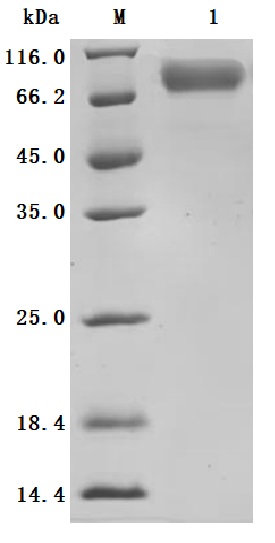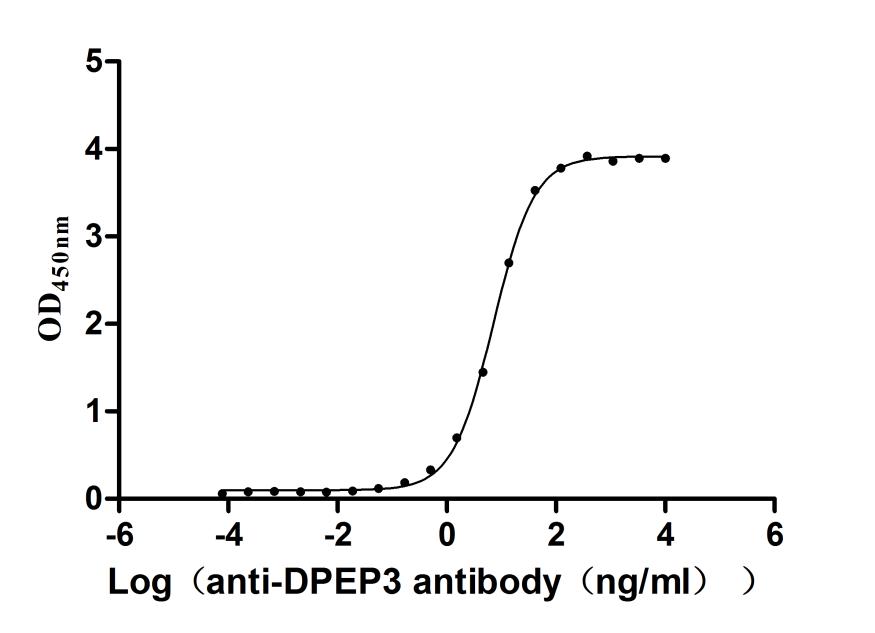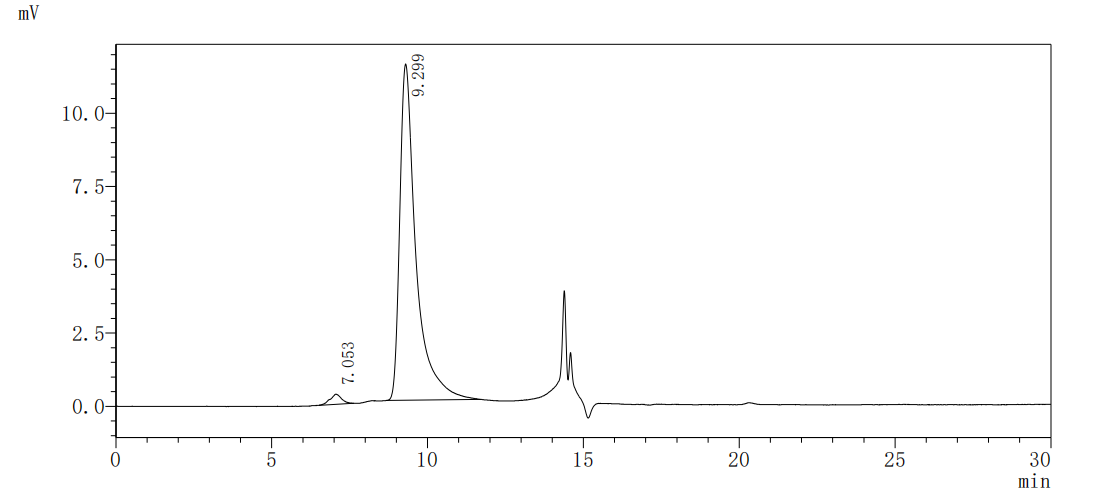This biologically active recombinant human dipeptidase 3 (DPEP3) protein, spanning residues 36-463, is expressed in mammalian cells with a C-terminal 10×His tag. Rigorously validated for quality, it demonstrates exceptional purity (>95% by both SDS-PAGE and SEC-HPLC) and ultra-low endotoxin levels (<1.0 EU/μg, LAL method). Functional characterization via ELISA confirms specific, high-affinity binding to anti-DPEP3 recombinant antibody (CSB-RA007125MA1HU) (EC50: 6.841–7.498 ng/mL at 2 μg/mL immobilization), affirming its structural integrity and antigenic competence. The His tag facilitates purification without disrupting functional domains, while the lyophilized form ensures stability and ease of reconstitution. This recombinant DPEP3 protein is a vital tool for studying DPEP3's roles in cancer progression, particularly in germ cell tumors and ovarian cancers, as well as its potential as a therapeutic target in antibody-drug conjugate development. Its dual purity verification makes it ideal for structural studies and high-sensitivity assays requiring minimal background interference.
The human DPEP3 protein is a metalloproteinase significant in reproductive biology, particularly in the context of male fertility. DPEP3 is primarily expressed in the testis, particularly in spermatogonia and spermatocytes, and plays a crucial role in spermatogenesis—a vital process for male fertility. This role is linked to its interaction with proteins of the ADAM (A Disintegrin and Metalloproteinase) family, indicating that DPEP3 may be essential for the maturation and functionality of sperm [1][2].
Recent studies have identified DPEP3 as part of a protein complex with TEX101, another important fertility marker. Research has shown that disrupting DPEP3 and TEX101 in germ cells and spermatocytes, especially those derived from human induced pluripotent stem cells (iPSCs), helps to elucidate their roles in producing viable sperm. However, successfully achieving in vitro spermatogenesis for humans has proven challenging, with such processes currently demonstrated only in mice [2].
Beyond its role in reproduction, DPEP3 is classified as a cancer-testis antigen (CTA), with expression noted in several cancers, including non-small cell lung cancer (NSCLC). Its presence may interact with the immune environment of tumors, and CTAs like DPEP3 could serve as potential biomarkers for malignancies, potentially leading to novel targeted therapy options in immuno-oncology [3].
References:
[1] D. Fietz, R. Sgaier, et al. Proteomic biomarkers in seminal plasma as predictors of reproductive potential in azoospermic men. Frontiers in Endocrinology, vol. 15, 2024. https://doi.org/10.3389/fendo.2024.1327800
[2] C. Schiza, D. Korbakis, E. Panteleli, K. Jarvi, A. Drabovich, & E. Diamandis. Discovery of a human testis-specific protein complex tex101-dpep3 and selection of its disrupting antibodies. Molecular & Cellular Proteomics, vol. 17, no. 12, p. 2480-2495, 2018. https://doi.org/10.1074/mcp.ra118.000749
[3] F. Hikmet, M. Rassy, et al. Expression of cancer–testis antigens in the immune microenvironment of non‐small cell lung cancer. Molecular Oncology, vol. 17, no. 12, p. 2603-2617, 2023. https://doi.org/10.1002/1878-0261.13474






